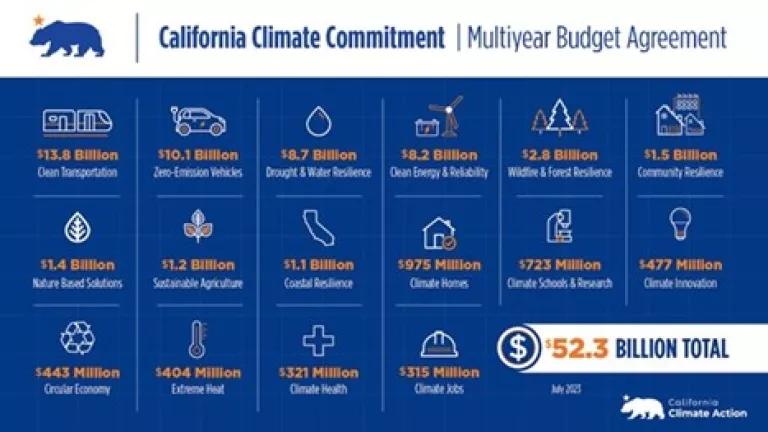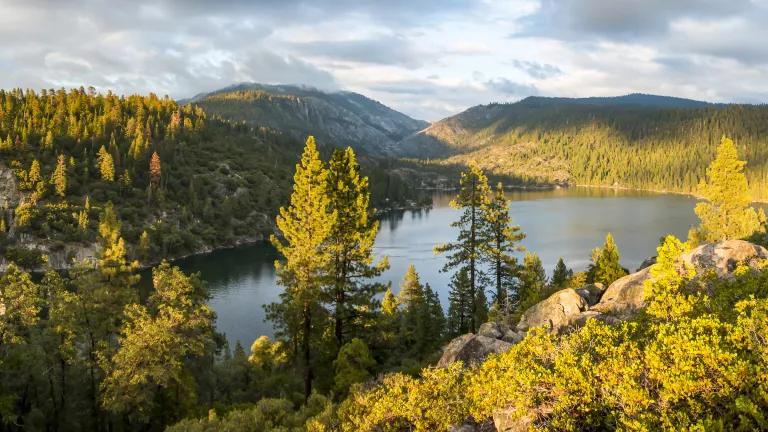AB 1373: Vital to Meeting CA’s Energy Goals Reliably and Affordably
AB 1373 includes important tools to bring new and diverse energy resources online and keep California’s energy transition on track.

Gary Norton / DOE
This bill has been signed by the Governor!
California’s clean energy ambitions require unprecedented coordination among state utilities, community choice aggregators (CCAs), project developers, and energy agencies to develop large clean energy projects and bring them online. After months of negotiation, recent amendments to Assembly Bill 1373 (E. Garcia) reflect an agreement between Governor Gavin Newsom and legislative leaders on a suite of reforms that will equip our state agencies with the charter and tools needed to achieve a clean electric grid by 2045.
Our evolving clean energy needs require our policy tools to evolve as well
California pioneered renewable electricity development through its renewable procurement standard (RPS). The RPS spurred investment in utility-scale solar and wind energy. As a result, California’s grid is among the cleanest in the country. Thanks in part to California’s leadership, solar, wind, and battery storage costs continue to decline. California’s next challenge is to meet Senate Bill 100’s goal of a zero-carbon electric grid by 2045. To accomplish this goal, California’s load serving entities (LSE) need to further invest in diverse clean energy resources that are complementary to our existing resources and in some cases require large upfront investments to provide benefits across the state. These include offshore wind, geothermal energy, and long duration energy storage. Offshore wind, for example, is abundant in the night-time and all through winter; the very times that solar is scarce.
Standard solar, wind, and battery storage technologies have established markets. Utilities and CCAs can rely on existing policy, market, and regulatory systems to keep buying these resources. But resources like offshore wind pose unique challenges (and opportunities). Building them cost effectively requires large scale development. To build these at scale, developers and transmission planners need a commitment that someone will buy the electricity these offshore turbines eventually generate. They also take a long time to build and require coordinated state infrastructure investments such as upgrading our ports and expanding transmission lines.
AB 1373 provides the necessary coordination and regulatory authority
Bringing these types of long lead time resources online requires coordination among all state energy agencies and all state LSEs. AB 1373 provides a backstop in cases where this coordination doesn’t happen organically by enabling the Department of Water Resources (DWR) to serve as a central procurement entity. State LSEs can still coordinate and commit to buying long lead time resources, but if they aren’t able to do that then the California Public Utilities Commission (CPUC) can engage DWR to buy these resources.
Owing to the recent growth of CCAs, the regulatory and market landscape has also been changing. Instead of four investor-owned utilities (IOU) that contract with the bulk of the state’s electricity needs, California now has more than forty LSEs that will sign most future clean electricity contracts. The size of the contracts needed to bring resources like offshore wind is greater than any one LSE’s individual needs; in many instances it’s also greater than the needs of multiple LSEs combined. Absent a central buyer the need to assign fractional shares to dozens of LSEs who would all have to negotiate their own contracts adds risk and cost to the project that customers will ultimately bear.
AB 1373 provides the CPUC the discretion to determine whether all state LSEs, including CCAs, have enough diverse clean energy resources under contract to meet our state’s clean energy and reliability goals. If they haven’t then the CPUC will authorize the DWR to fill the gap and allocate costs among LSEs. This doesn’t take away CCAs ability to self-procure. They can still band together to sign big contracts in a timely manner so that DWR does not have to do so on their behalf. This bill also places limits on what resources DWR can procure – for example, the resource cannot generate electricity using fossil fuels, fuels derived from fossil fuels or combustion (unless ancillary to facilitate geothermal projects), must have a development lead time of over 5 years, and for pumped hydro only applies to the San Vicente Reservoir.
AB 1373 contains many other timely clean energy provisions
In addition to establishing a central procurement entity, AB 1373 also includes the following:
- Supports the allocation of at least $6 million for environmental research and monitoring to ensure that California’s marine ecosystems are protected when developing offshore wind.
- Commits to further investing in a skilled workforce to support the development of energy projects.
- Requires that economic and local community impact be considered in DWR procurements. This should be strengthened to ensure local community engagement and direct benefits from any projects.
- Requires the California Energy Commission (CEC) to identify barriers to interconnection and energization – ensuring that new clean capacity can connect to the grid to support electric car and truck charging – and develop solutions to those barriers.
- Accelerates permitting for electric transmission projects that have been identified as needed by the California Independent System Operator (CAISO) – like power lines and transformers – to deliver more clean electricity throughout the state.
- Recently the state has had to rely on emergency resources – the strategic reliability reserve – to provide power during hot summer evenings to keep our lights and air conditioners on. AB 1373 allocates a fair share of emergency spending to LSEs that didn’t contract their share of reliable clean power, and instead had to rely on these backup resources.
- Requires Publicly Owned Utilities (POU) to contract with enough capacity to ensure a reliable grid. It assigns the CEC to check whether POUs comply with these requirements.
All told, AB 1373 includes important tools to bring new and diverse energy resources online and keep California’s energy transition on track. NRDC is pleased to support it and appreciates the leadership of Governor Newsom, Pro Tem Atkins, Speaker Rivas and Assembly Utilities and Energy Committee Chair Garcia who crafted AB 1373.





